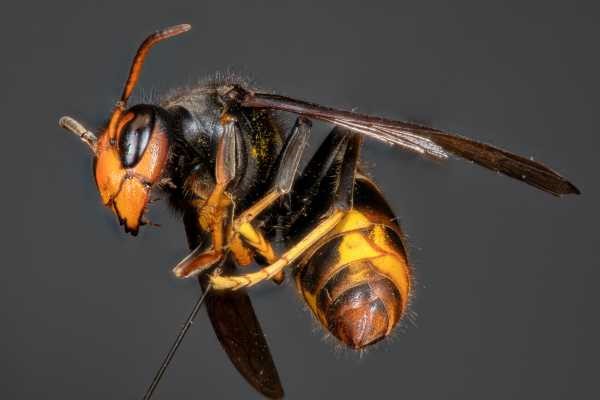Natural Enemies Of Bees
Updated: 3 February 2021
Bees may be attacked in various ways at various points in their life cycles, and by a diverse range of parasites and predators.
Parasites And Natural Enemies Of Bees
Here is a list of various links to information on this website containing information covering some of the natural parasites and enemies of bees.
Conopid Flies
Known parasitoids of bumble bees, honey bees and large orchid bees. Read about Conopid flies.
Nematodes (Sphaerularia bombi)
Like Conopid flies, this parasite causes infected bees to dig into the ground. Read about this parasitoid.
Varroa Mite
The Varroa mite is associated only with honey bees.
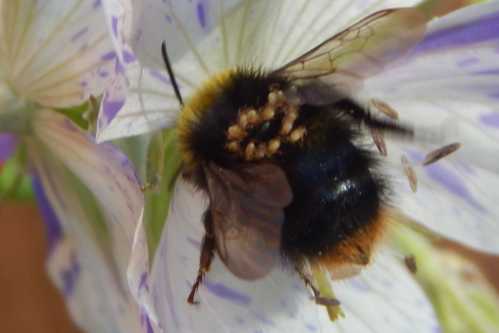
Phoretic Mites
Phoretic mites such as the mite, Parasitellus fucorum are often seen attached to the thorax (upper body) of bumble bees. They are usually commensal only (living alongside), but may also become vectors of diseases if an infestation occurs, although the impact of these mites is debated.
Pollen Mites
Scroll down my page about mason bees to read about pollen mites attacking a mason bee host.
Bee Fly
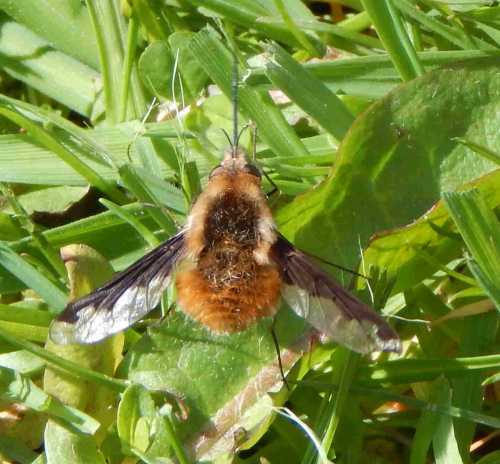 The bee fly is a cleptoparasite that can sometimes be mistaken for a bee.
The bee fly is a cleptoparasite that can sometimes be mistaken for a bee.On first siting, the bee fly can sometimes be mistaken for a bumble bee or solitary bee species, but is actually a cleptoparasite.
Wasps and Hornets
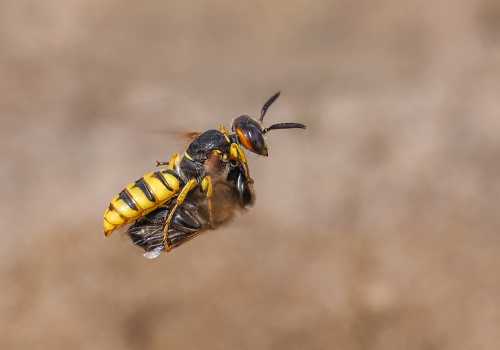
Wasps are generally beneficial, however, some species like the bee wolf pictured above, will attack and kill bees.
Wasps and hornets may take small bees and larvae to feed their own offspring, as well as raid nectar stores.
Honey bees in some regions of the world have evolved methods of defending their colonies against hornets, including the Asian giant hornet. You can read more about this on my page How do bees defend themselves against hornets?
Spiders
I get many emails asking me about how to remove a bee from a spider web. It's controversial, but I provide advice rescuing bees trapped in spider webs.
However, not all spiders trap bees in the same way. One such example is the candy-striped spider pictured below.
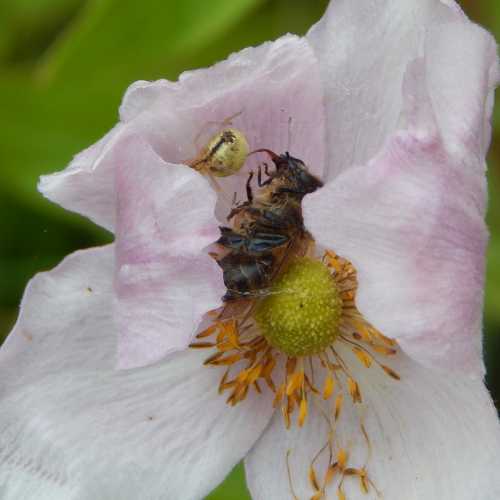 Honey bee trapped by a candy striped spider in a pink rose flower
Honey bee trapped by a candy striped spider in a pink rose flowerNomad Bees
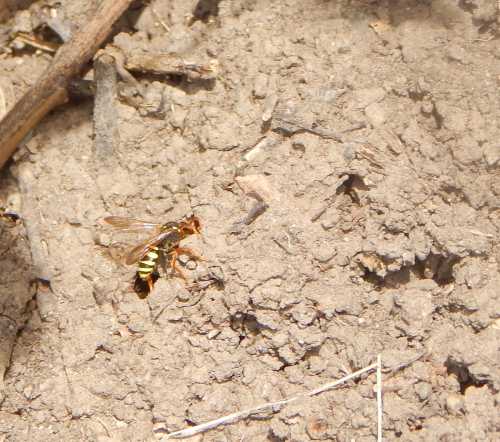
Other bee species can also be parasites. Nomad bees are cleptoparasites, primarily of solitary bee species. They resemble small wasps.
Cuckoo Bumble Bees
There are a number of species of cuckoo bumble bee, none of which have pollen baskets. They rely on their target host workers to feed and help rear their own offspring.
Larger predators
Bird Predation
A number of insect-eating bird species will take a few bees as part of their diet.
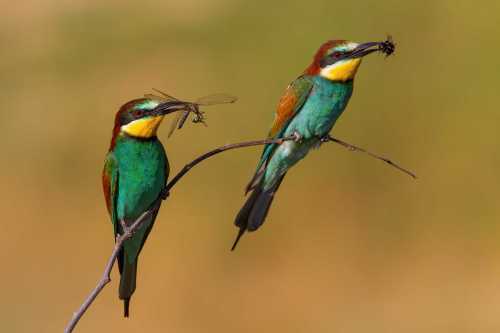
For example, Bee-eaters are strongly associated with bees, yet they feed on a range of insect species.
If you should find headless bees, or bees with part of the body missing, predation by birds may be the reason. Read more about bumble bees with missing heads.
In Africa, the Greater Honeyguide bird is famous for leading human honey hunters to honey bee nests abundant in honey. Read about the Greater Honeyguide Bird.
Honey badger
Despite its name, the honey badger may be more interested in eating the larvae of honey bees than the actual honey.
Racoons
A reader submitted a wonderful blog about how she protected a wild bumble bee nest from hungry racoons!
If you found this page helpful or interesting, I'd really be grateful if you would share it with others - if not this page, perhaps another, such as Gardening For Bees.
Thank you so much :) .
